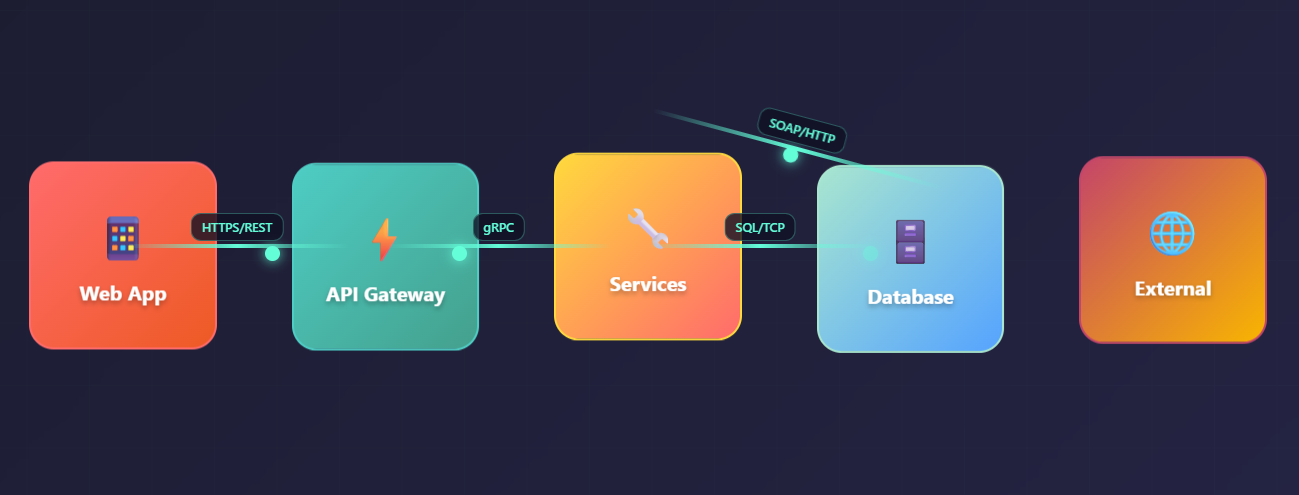Struggling with unexpected outages or inefficient IT workflows?
Modern enterprises run on interconnected systems, yet 60% of downtime stems from unknown dependencies.
Our application dependency mapping template transforms blind spots into actionable insights. This way, you can proactively manage risks, streamline upgrades, and avoid costly disruptions.
Why application dependency mapping matters
Most IT teams lack a real-time view of how applications, servers, and services interact. Without this clarity, a single change can trigger cascading failures. Dependency mapping answers:
- What breaks if System X goes down?
- Which apps rely on legacy tech, delaying modernization?
- How does data flow across critical processes?
Think of it as your IT architecture’s nervous system - without it, you’re troubleshooting in the dark.
5 principles of dependency mapping for applications
Our framework turns complexity into clarity with structured tracking:
1. Application inventory & ownership
Stop guessing who manages what. Document all applications, vendors, and stakeholders to eliminate accountability gaps.
- Application Name, Description, Criticality Tier
- Business Owner vs. Technical Owner
- Vendor/Support Contract Details
2. Dependency visualization

Map relationships between systems, APIs, and databases.
- Upstream/Downstream Dependencies (e.g., App A → API → Database)
- Data Flow Diagrams
- Protocols & Integration Types (REST, SOAP, FTP, etc.)
3. Risk & impact analysis
Quantify the blast radius of failures.
- Single Points of Failure (SPOFs)
- High-Risk Legacy Dependencies
- Compliance/Data Sensitivity Flags
4. Change management integration
Prevent unexpected moments during upgrades.
- Pre-Change Dependency Checklists
- Version/End-of-Life Tracking
- Automated Alert Rules (e.g., if Node X is modified, notify Team Y)
5. Performance & health monitoring
Track real-time system interactions to prevent degradation.
- Latency & Bottleneck Analysis (e.g., App B slows down when App C peaks)
- Dependency Health Scores (uptime, error rates, SLA compliance)
- Automated Threshold Alerts (e.g., "API response time >500ms → notify DevOps")
Best practices for reliable dependency mapping
Most IT teams rely on outdated spreadsheets or tribal knowledge, leading to missed dependencies, unexpected outages, and costly firefighting. High-performing teams, however, follow these proven strategies to maintain accurate, actionable dependency maps:
Start with critical apps first
Tier systems by business impact. Mapping every system at once is overwhelming and unnecessary. Implement it by:
- Classifying apps by criticality
- Prioritizing mapping for Tier 0 & 1 systems
- Use risk scoring to auto-flag high-priority dependencies.
Automate discovery
Manual mapping is slow, error-prone, and instantly outdated. With Dart’s integrations, you can auto-detect:
- Server-to-server connections (e.g., microservices, databases).
- Network dependencies (firewall rules, load balancers).
- Third-party integrations (SaaS, payment gateways).
Validate with stakeholders
Developers ≠ business users. Technical teams see code-level dependencies; business teams see process-level impacts.
Interview app owners to confirm who truly uses the system and if there are any undocumented workarounds.
Update quarterly
Dependencies evolve with every patch or new integration. A 6-month-old map is worse than useless - it’s misleading. For this reason, you should:
- Set calendar reminders for quarterly reviews.
- Trigger updates after major events.
From theory to results
Organizations using structured dependency mapping have witnessed the following improvements:
- 40% faster incident resolution (no more "whodunit?" delays)
- 30% reduction in upgrade failures (planned changes stay planned)
- Compliance audit readiness (always know where data lives)
Replace reactive firefighting with proactive control
"The map is not the territory - but without it, you’re lost."
Our platform automates dependency tracking, syncs with CMDBs, and provides real-time impact dashboards - so your template becomes a living system, not a static document.







